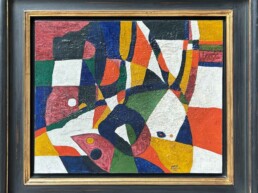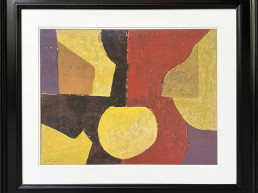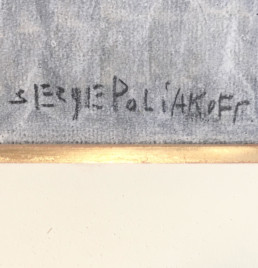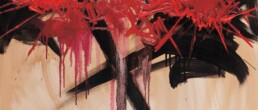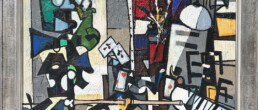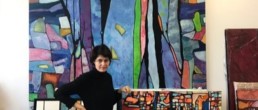Serge Poliakoff
1900 (Moscou) - 1969 (Paris)
Biography
Serge Poliakoff (Sergueï Poliakov) was a French painter of Russian origin, born in Moscow in 1900 and who died in Paris on October 12th, 1969.
Serge was raised in a privileged environment as a member of a large family. His father bred horses and counted the cavalry of the Russian Army among his clients. His mother regularly took him to church, where he discovered the art of icons. From the very beginning, his passion was awakened, and he soon enrolled in drawing classes.
Following the Russian Revolution, he fled in 1918 to what was then Constantinople in Turkey. After extensive travels in Eastern Europe in 1918, the young Poliakoff settled in Paris in 1923. His talent as a guitarist had allowed him to earn a living in Turkey, and he continued earning money with this musical passion in the Russian cabarets of the French capital. The combination of musical and visual talent made Serge Poliakoff a complete, well-rounded artist.
Although Poliakoff enrolled at the Grande Chaumière art academy in 1929, it was his sojourn in London between 1935 and 1937 that was to prove decisive for his pictorial style. In London Poliakoff discovered abstract art, which lead him to break with the classicism he had previously adhered to. At the British Museum, he also absorbed the explosive colours of Egyptian sarcophagi. These two inspirations pushed Poliakoff toward a new abstraction made up of coloured surfaces in which the movement of the artist remains nevertheless visible. Lying somewhere between geometry and lyricism, these zones resonate with dynamism thanks to the artist’s presence. This new form of expression was bolstered by contact with the greatest colourists and abstract artists of the time, including Kandinsky and Sonia and Robert Delaunay, to name only a few. In 1935, Poliakoff encountered the artist who was to become his wife, Marcelle Perreur Loyd.
In 1947, Poliakoff—along with Victor Vasarely, the young Jean Dewasne, Gérard Schneider, and many other French abstract artists—took part in the famous trip to Gordes organized by Jean Deyrolle and Denise René. Poliakoff was now recognized as one of the most innovative and promising voices in the French abstract movement.
At the instigation of the critic Charles Estienne, in 1954 and 1955 Poliakoff summered with Jean Degottex, René Duvillier, and Marcelle Loubchansky in Porstall, Brittany. These artistic excursions revealed the French art scene in all its diversity. Serge Poliakoff positioned himself at the intersection of all these inspirations : neither totally lyrical, nor geometric—a colourist of bold tones at times and of pastel tons at others, Poliakoff understood how to develop an original visual language in every aspect.
In 1962 Poliakoff was naturalized, becoming a French citizen. In the same year, he had his own room in the French pavilion at the Venice Biennale, which symbolized France’s recognition of the art of its new citizen.
The first monographic exhibition of Poliakoff’s work was held in 1970 at the Musée d’Art Moderne de la Ville de Paris. In 2013, the same museum would dedicate an important retrospective to the painter, now recognized as one of the most powerful of the French post-war art scene.


